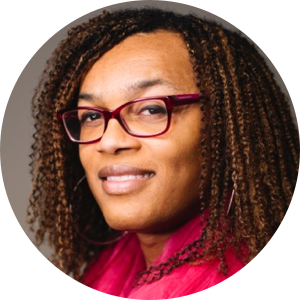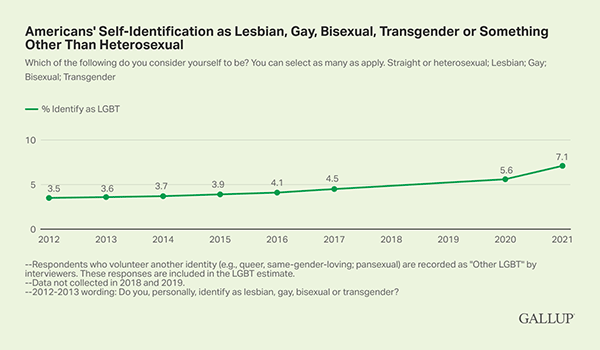
A Message from the Strategist
Why Understanding Intersectionality Is Critical
[M]any of the battles we’re fighting today are problems that grow out of intersectional failures from yesterday. So, my hope—I believe a collective hope…is that this concept can help us provide a prism to find some of those failures, to repair those failures, and to create a basis for a far broader, deeper, more robust coalition towards the kind of world [workplace] we want to build.
-- Kimberlé Crenshaw, Women of the World Festival, London, 2016
The Lavender Scare’s dismissal of so many Federal workers, the daily oppressions that led to the Stonewall Uprising, the ways the HIV/AIDS crisis ravaged so many lives and the violence trans women of color now continue to face daily, these are some of the “failures” of which Dr. Crenshaw refers.

The framework for the discussion this month is recognizing the intersection of being a member of the LGBTQ+ community as well as having other lived experiences based around race, class, disability, citizenship, and more. Beyond the singular, it is the combination of these multiple, overlapping identities that create unique challenges that are much more complex, and that must be acknowledged as we create the tools and resources to create a safe environment that ensures everyone is secure.
Bali White
Principal Strategist
Portfolio for Sexual and Gender Minorities
Activities & Events

Outdoor Pride Picnic
Tuesday, June 7, 2022 | 1-3PM ET
Clinical Center, South Entrance
This will be a social event in observance of Pride Month, bringing members of SGM communities and their allies together at NIH for an outdoor picnic in celebration. This event will be held by the South Entrance of the Clinical Center and will be co-hosted by Salutaris: The NIH Sexual & Gender Minority Employee Resource Group and the NIH Office of Equity, Diversity, and Inclusion. NIH Office of Research Services coordinated food trucks will be on site.

Capital Pride Alliance Pride Parade – NIH (Salutaris and EDI) with Pride in Federal Service
Saturday, June 11, 3:00 – 7:30PM (10AM-12PM lineup time) ET
Logan & Dupont Circle Neighborhoods, DC
Members of the NIH community are welcome to march in the Capital Pride Alliance Pride Parade with a contingent of federal employees who identify as LGBTQ+ and/or as allies. This contingent is being organized by PRIDE in Federal Service (PFS), an interagency group comprised of LGBTQ+ employees and their allies. The parade is expected to loop around the District neighborhoods of Logan Circle and Dupont Circle from 3:00 to 7:30 PM and line-up times are tentatively between 10 AM to 12:00 PM.

Twitter Chat – Intersecting Identities: Experiences of LGBTQIA+ People in the Workforce
Wednesday, June 15, 2022 | 1-2PM ET
EDI will be hosting a Twitter Chat to engage with the NIH community in a discussion about how intersecting identities shape and impact the workplace and overall life experiences of LGBTQIA+ people. Twitter Chats are great for building community, sharing knowledge, enhancing mutual understanding, and providing a safe place for meaningful dialogue. All members of the NIH community are invited to participate in this Twitter Chat and share their experiences, should they wish.

Panel Discussion: Together Toward Discovery: How intersecting identities impact our NIH work
Wednesday, June 22, 2022 | 1-3PM ET
Wilson Hall, Building 1 / Virtual
With opening remarks by Admiral Rachel Levine, MD, HHS Assistant Secretary for Health and moderated by Bali White, this event will feature a diverse panel of invited speakers from different components across the NIH who will be led through a moderated discussion, followed by a question-and-answer session.
Intersectional Voices: New Pride Perspectives
Intersectional Voices: Revisiting Past Perspectives
Take a moment to read and view these previously published EDI blogs and our special campaign, “Telling Our Stories,” that underscore intersectionality.
Resources for Better Understanding LGBTQIA+ People

LGBT Identification in U.S. Ticks Up to 7.1%1
The proportion of U.S. adults who consider themselves to be lesbian, gay, bisexual or transgender has grown at a faster pace over the past year than in prior years. This is occurring as more of Gen Z is reaching adulthood. These young adults are coming of age, including coming to terms with their sexuality or gender identity, at a time when Americans increasingly accept gays, lesbians and transgender people, and LGBT individuals enjoy increasing legal protection against discrimination.
Given the large disparities in LGBT identification between younger and older generations of Americans, the proportion of all Americans who identify as LGBT can be expected to grow in the future as younger generations will constitute a larger share of the total U.S. adult population. With one in 10 millennials and one in five Gen Z members identifying as LGBT, the proportion of LGBT Americans should exceed 10% in the near future.
Yet [The LGBT Community] Feel Compelled to Hide in Plain Sight
46% of LGBT employees hide who they are at work. A “Chilly work environment” is created through a multitude of small inequities in the workplace which targets SGM workers.
- 36% Making people feel uncomfortable.
- 27% People might think I’m attracted to them.
- 38% Stereotyped.
- 53% Heard LG jokes, 41% trans, 37% bi.
- 31% Losing connection with coworkers.
- 13% Thought they would be fired.
Source: A Workplace Divided: Understanding the Climate for LGBTQ Workers Nationwide, Human Rights Campaign
Percentage of LGB Workers Report Perceived Challenges Advancing because of Sexual Orientation
- 10-21% Received a negative performance evaluation
- 11-28% Passed over for a promotion
- 9% Lost a job in the past five years
Percentage of Transgender Workers Report Perceived Challenges Advancing because of Gender Identity
- 90% Harassment on the job.
- 47% Fired, not hired or denied promotion.
- 44% Under-employment
- 26% Loss of job because of Gender Identity
Source: Injustice At Every Turn: A Report of the National Transgender Discrimination Survey, National LGBTQ Task Force
Executive Level Support for LGBTQIA+ Communities



















